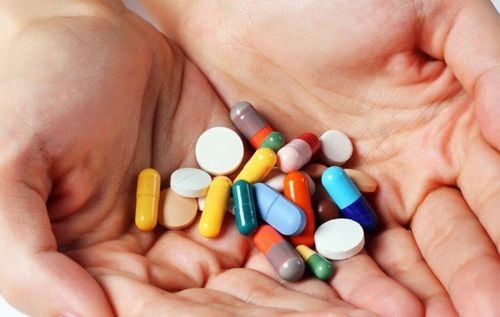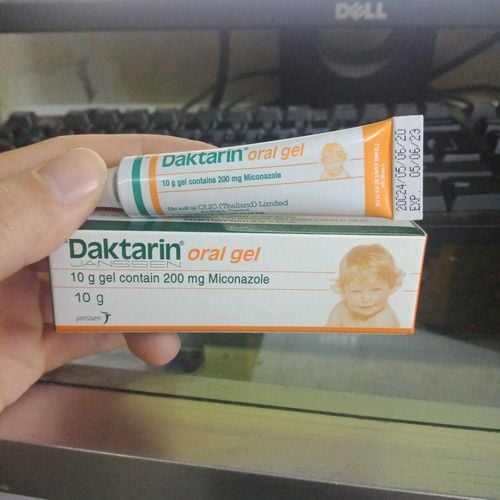This is an automatically translated article.
Kanamycin 10 is active against gram-positive and gram-negative bacteria and is effective in the treatment of a wide range of infections and tuberculosis. To better understand the uses and ingredients, learn about Kanamycin 10 in the following article.
1. Kanamycin belongs to which group of antibiotics?
Kanamycin (also known as kanamycin A) is an aminoglycoside bactericidal antibiotic, available in oral, intravenous, and intramuscular forms, and used to treat a variety of infections. Kanamycin was isolated from the bacterium Streptomyces kanamyceticus and the most commonly used form is Kanamycin sulfate.
Kanamycin is an aminoglycoside antibiotic. Aminoglycosides work by binding to the bacterial 30S ribosomal subunit, distorting the tRNA and preventing the bacteria from synthesizing proteins needed for growth. Aminoglycosides are mainly useful for infections with aerobic Gram-negative bacteria such as Pseudomonas, Acinetobacter and Enterobacter. In addition, some mycobacterium, including the bacteria that cause tuberculosis, are sensitive to aminoglycosides. Infections caused by Gram-positive bacteria can also be treated with aminoglycosides, but other antibiotics are stronger and less harmful to the host.
Kanamycin is rapidly absorbed following intramuscular injection and usually reaches peak serum concentrations within about 1 hour. Difficult to be absorbed orally and locally, except in cases of severe skin damage. The half-life of the drug is 2.5 hours.
Mild and reversible nephrotoxicity may be observed in 5 - 25% of patients. Amikacin accumulates in proximal tubular cells. Tubular cell regeneration occurred despite continued drug exposure. Toxicity usually occurs several days after starting treatment. May cause irreversible ototoxicity. Otoxocity appears to be correlated with cumulative lifetime exposure. Drug accumulation in the endolymph and perilymph of the inner ear causes irreversible damage to the hair cells of the cochlea or the apex of the ampullary cristae in the vestibular complex. The ability to hear high frequencies is lost first with progression to low frequency hearing loss. Further toxicity may lead to retrograde degeneration of the 8th cranial nerve (vestibular). Vestibular toxicity can cause dizziness, nausea, vomiting, dizziness, and loss of balance.
2. What are the uses of Kanamycin 10?
Kanamycin 10 may be indicated for short-term use to treat severe infections caused by susceptible strains of bacteria such as E. coli, Proteus, Enterobacter aerogenes, Klebsiella pneumoniae, Serratia marcescens and Mima Herella, Mycobacterium tubeculosis, Pseudomonas aeruginosa, Hemophilus influenzae, Streptococcus pneumoniae in cases such as infections of the biliary tract, bones and joints, abdominal cavity, lungs, skin and soft tissues, urinary tract, pulmonary tuberculosis and extrapulmonary tuberculosis when other antibiotics cannot be used. (less toxic) due to resistance or contraindications.
Treatment of gonorrhea and gonorrhea eye infections in infants.
Kanamycin can be used in combination with penicillins or cephalosporins if necessary in the treatment of some serious infections, but should be avoided when hearing and kidneys are damaged.
Kanamycin can be used as a second-choice drug in the treatment of TB, but is rarely used because other safer drugs are available. Also, for the treatment of infections where one or more of the following species is a known or suspected pathogen: E. coli, Proteus species (both indole-positive and indole-negative), E. aerogenes, K. . pneumoniae, S. marcescens, and Acinetobacter species.
Using kanamycin in combination with penicillin or cephalosporin can treat some serious infections except where kidney and hearing damage is already present. Kanamycine is a second-line TB drug used in the treatment of patients with drug-resistant TB. However, now that there is a second-line anti-TB drug that is non-invasive and does not require injection, Kanamycine is no longer widely used to treat TB.
Kanamycin 10 is contraindicated in patients with a history of hypersensitivity or toxic reactions to Kanamycin or other aminoglycosides such as streptomycin, gentamicin, fradiomycin, bacitracin or to any of the ingredients.
The drug is not indicated in prolonged therapy (eg tuberculosis) because of the risk of ototoxicity and nephrotoxicity associated with prolonged use.
3. How to use Kanamycin 10 effectively
Kanamycin works best when the patient carefully learns the application information on the drug packaging and uses it according to the instructions of the doctor. Please note that patients are not allowed to arbitrarily use drugs with higher, lower or longer doses than the course. When using drugs by intramuscular route, patients need to follow some rules to avoid unwanted side effects on tissues and nervous system.
When injecting, do not mix kanamycin with other drugs. Long-term continuous use of the drug should be avoided. Before injection, the vial should be disinfected with an alcohol swab. The user is not allowed to inject the drug into the nerve sites and not to allow repeated injections at the same site Extreme caution should be exercised when administering to infants, premature infants and breastfed infants. If there is severe pain at the injection site and bleeding, the patient should immediately withdraw the needle and inject at another site. Care must be taken to observe with the naked eye the kanamycin sulfate solution. The solution should be clear, colorless and rarely turn pale yellow. Talk to your doctor if you have any questions while using the medicine. If an overdose is detected, the user should see a doctor immediately. If you miss a dose, take it right away. However, if the missed dose is close to the next dose, skip it and continue with the prescribed regimen and ignore the two doses. Kanamycin is used at a dose suitable for each subject and the disease condition being treated. Treatment of tuberculosis in adults, the usual dose is 2g kanamycin IM, divided into morning and evening, orally 2 times/week or 1g x 1 time/day for 3 days. Use 0.5-0.75g drug for elderly patients (60 years and older). Used in combination with other anti-tuberculosis drugs. Low birth weight children should consult a doctor when using the adult infectious diseases drug Kanamycin 1 to 2 g administered intramuscularly in 1 to 2 divided doses.
For tuberculosis in children: Children must take medicine prescribed by a doctor to avoid the risk of Infectious diseases in children Normal dose: intramuscular injection of patient body weight 30-50 mg / kg per day Dosage should be divided 1-2 times Local medicine can be used as needed, and the dosage is adjusted according to the severity of the condition and the age of the child.
4. Possible side effects when taking Kanamycin
Like other antibiotics, kanamycin can cause unwanted side effects for patients, especially when abused and used improperly. Some common side effects: When kanamycin is taken at a daily dose of 1g for 1 to 6 months, there is a 40% chance of patients experiencing ototoxic side effects. Patients have a 50% risk of nephrotoxicity when taking the drug with a total dose of 30g or more. Patients with increased ototoxicity when taking the drug in combination with vancomycin.
Less common side effects: Hypersensitivity with symptoms of erythema, fever when injected with vestibular toxicity (risk less than 10%). This usually goes away when the medication is stopped. Anaphylaxis, neuromuscular blockade, paresthesia to deal with side effects: If the patient is found to have hearing toxicity with tinnitus symptoms, the drug should be reduced or stopped immediately. If you notice cylinders or urine particles within the first 16 hours of taking a high dose, don't worry, the cylinders won't cause permanent damage and should go away when you stop the medication.
5. Be careful when using kanamycin 10
If renal function is impaired, the kidneys are not able to eliminate Kanamycin effectively and the serum concentration of Kanamycin increases rapidly, the dose should be reduced to avoid toxicity. Patients with renal impairment have a longer serum retention time of kanamycin. If kanamycin is administered to patients with anuria, it should be administered every 3 to 4 days and the dose reduced to half the usual dose. However, the safest treatment is to control serum drug levels at 30 micrograms/ml or less.
Always use caution when using Kanamycin and have been resistant to other antibiotics, but are sensitive to Kanamycin and have severe or resistant bacteria with blood levels not exceeding 30 micrograms/mL.
Should only be used for infectious diseases. Kanamycin has the same effect as myasthenia gravis, so it should be used with caution in patients with myasthenia gravis. Because there have been some cases of respiratory arrest and respiratory failure due to intraperitoneal injection of Kanamycin. In addition, topical use of Kanamycin in spine surgery induces sensory and motor neuropathy. Kanamycin slightly reduces muscle tone in patients with myasthenia gravis and should not be administered intraperitoneally. During surgery for patients who have been treated with neuromuscular blocking agents.
Do not use kanamycin during pregnancy. Lactation Kanamycin is excreted in milk and the ratio of Kanamycin in milk to blood is 0.050.40. After 1 g intramuscular injection, the peak concentration of kanamycin in milk was 18.4 mg/l. No effects have been observed in the nursing infant as Kanamycin is poorly absorbed from the oral route.
Above is all the important information about Kanamycin that you need to be aware of. Knowing this information will help the drug use process to be highly effective and safe for the patient's health.
Please dial HOTLINE for more information or register for an appointment HERE. Download MyVinmec app to make appointments faster and to manage your bookings easily.













